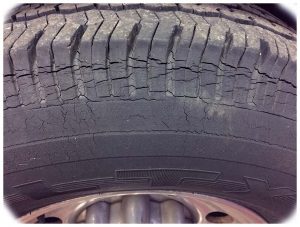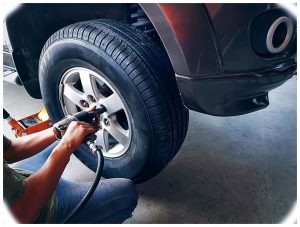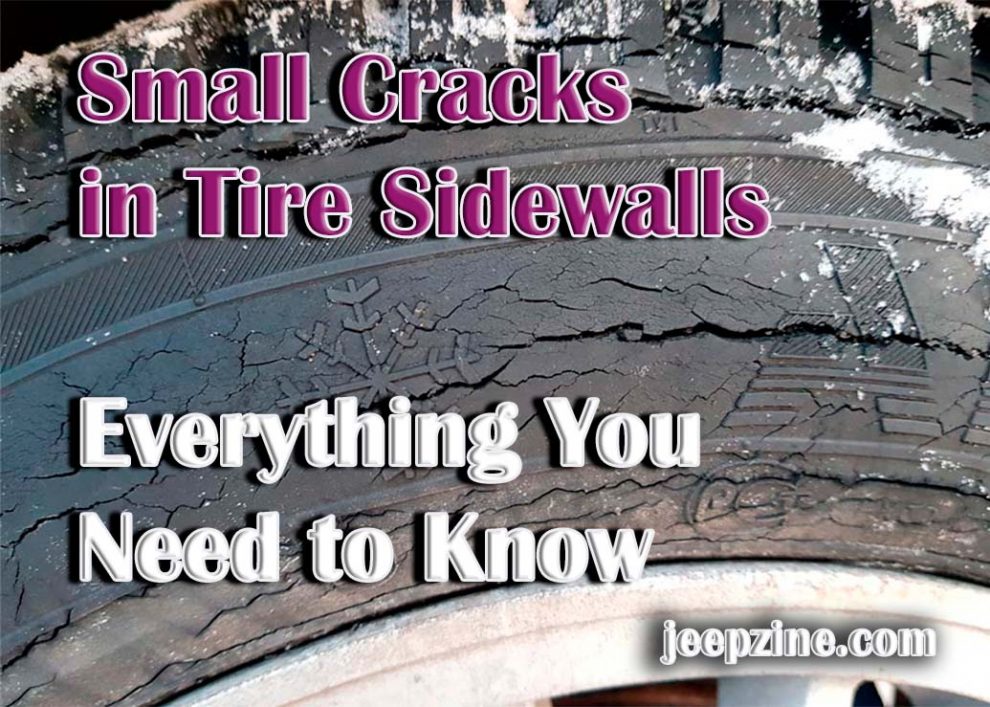Tire sidewall cracks can be an unexpected hazard to many drivers and cause serious damage to your vehicle. When a tire’s sidewall cracks, it increases the chances of a blowout or flat, which can put you and other people on the road at risk. Understanding what these cracks are, how they come about, and how to identify them is the best way to keep yourself safe from potential tire failure.
What Are Tire Sidewall Cracks?

Causes of Sidewall Cracks
Age and Weather Conditions: Tires naturally deteriorate over time due to environmental factors such as heat, cold, sun exposure, ozone levels, and salt air. As the rubber gradually weakens, small cracks can form in the tire’s sidewall due to normal wear and tear from driving. This can be especially true in regions with dry climates and extreme temperatures, which can accelerate tire deterioration.
Low-Quality Tires: Low-quality tires are much more likely to succumb to sidewall cracking than higher-quality ones, as they’re generally made with cheaper materials that don’t last as long or protect your vehicle as well when driving. Drivers need to consider investing in better quality tires if possible, as this will help extend its lifespan and save them from having to purchase new ones prematurely due to tire failure from cracking.
Poor Inflation/Overloading Vehicle: Another common cause of sidewall cracking is underinflating or overloading your vehicle. When too much weight is placed on a tire, it increases stress on its walls and can cause small fractures over time, while underinflated tires are more likely to experience blowouts since there’s not enough air pressure pushing against its internal structure. To avoid this issue drivers need to keep track of their tire pressure levels and try not to overload their vehicles with too much weight.
Poor tire maintenance: Failing to regularly maintain your tires can also lead to sidewall cracking due to wear-and-tear over time. It’s important for drivers to inspect their tires every few months and look for any signs of damage or wear that may indicate the need for a tire rotation, alignment, or other types of repairs to keep them in good condition.
Effects of Tire Sidewall Cracks
The effects of tire sidewall cracks can range from minor issues, such as reduced handling capabilities and increased noise levels when driving, to more serious blowouts and flat tires, which can put you at risk on the road. Additionally, fractured sidewalls cause a significant amount of air loss over time, which can reduce fuel efficiency and cost you money down the line from having to purchase new tires prematurely due to their failure from cracking.
How To Identify Tire Sidewall Cracking
Identifying small cracks in your car’s tires is not always easy as they’re generally not visible unless you look carefully at each tire sidewall. The best way to identify this issue is by either looking closely at each sidewall or inspecting the tires with a flashlight for any signs of cracking or fraying. Additionally, if you notice any unusual sounds or vibrations when driving it may be a sign that your tires are not in good condition and could be at risk of failure due to sidewall cracking.
How to Fix Small Cracks in Tire Sidewalls

Prevention Tips For Avoiding Tire Failure Due To Sidewall Cracking
The best way to prevent your vehicle’s tires from succumbing to sidewall cracking is by ensuring they’re regularly inspected for any signs of wear and tear and consistently keeping them at their optimal pressure levels. Also, choosing higher-quality tires when possible and avoiding overloading them can help extend their lifespan and reduce wear and tear from too much stress on the sidewalls.
Conclusion
Tire sidewall cracking is a common issue that can cause serious damage to your vehicle and put you in danger when out on the road. By understanding what these cracks are, their causes, and how to identify them to prevent an unexpected blowout, you can ensure that your vehicle’s tires remain in good condition for years to come.


Add Comment